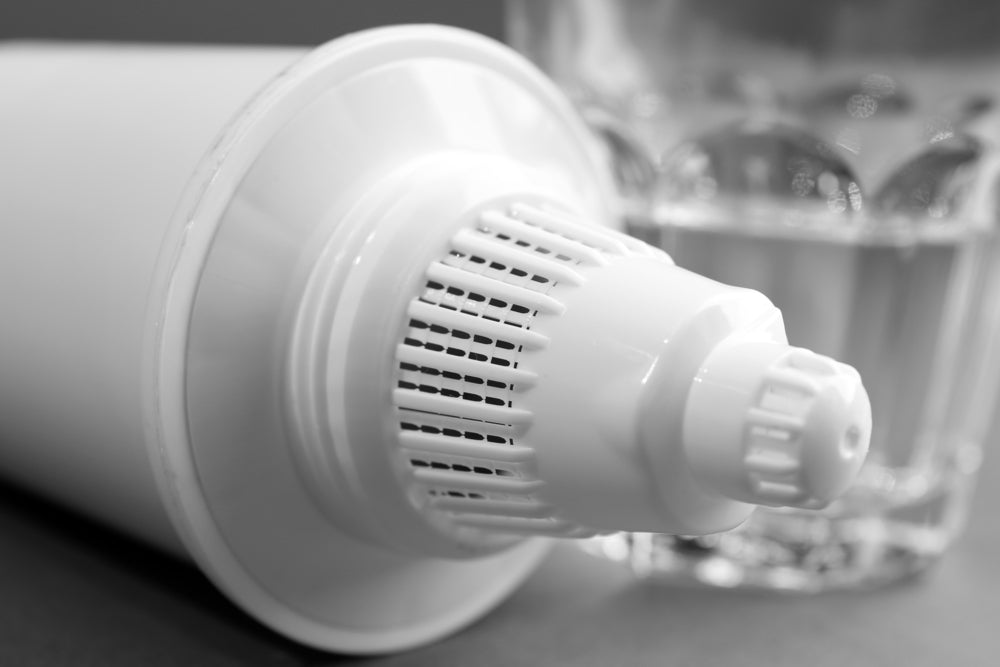If you live in an area of the United States with clean municipal drinking water, count yourself lucky—there are hundreds of millions who don’t enjoy that same daily convenience. Water quality crises like the one in Flint, MI are more common than you think! Residents in Galveston, TX face high levels of arsenic in their supply, while Milwaukee, WI residents have some of the highest lead levels in the country. Pennsylvania, New Jersey and many other states have low water quality due to industrial runoff.
To get the clean, safe drinking water they need (and deserve), residents in these areas turn to at-home filtration systems. Unfortunately, not everyone can afford a whole-home filtration system, which can cost between $1-$3k just for the equipment (and more for installation). For many more who live in apartments, condos or mobile homes, whole-home filtration isn’t even a viable option.
The most common, convenient solution is a filter pitcher. The problem is, not all personal filtration systems are the same.
Off-the-shelf won’t do the trick
Let’s say you live in a senior condo community in Florida, in citrus country. The lower peninsula of the state is a beautiful place to live, but it has a problem with water quality—high pesticide levels in groundwater. You decide to buy a couple of filtration pitchers, to filter your tapwater.
You go to a big box store like Walmart or Target and find a few options on the shelves, from brands like Brita® or Pūr®. You know these names and the price point seems right ($25-$50), so you decide to buy a couple of pitchers.
Unfortunately, name recognition and price point have nothing to do with filtration capabilities. You need to look beyond the name, to the engineering behind the product.
What kind of filter(s) does the pitcher use? Is it NSF certified? Are there laboratory tests to show the filter meets ANSI/NSF Standards for filtering both organic and inorganic compounds? There’s a lot to consider when looking for a water filtration pitcher! And, unfortunately, most off-the-shelf, name-brand filter pitchers don’t meet expectations.
Don’t worry—it’s easy to get fooled. You’re not a water quality expert—you’re someone trying to get clean, safe, accessible water! Most marketing persuades you with convenience and flashy images, not the engineering that goes into a highly-effective filter pitcher.
Here’s what to look for when it comes to making a confident investment in personal filtration.
You get what you pay for
While off-the-shelf filtration pitchers might tout their bisphenol-free (BPA-free) construction or long-lasting filter, look for products that give you information about how effective the pitcher really is. For example, take a look at the engineering behind Aquaspace Carafe® Pitchers:
- Instead of a simple carbon filter, Aquaspace utilizes a special blend of carbonaceous materials (Compound), developed using NASA Filtration Technology. It filters unwanted organic and inorganic chemicals, and doesn’t lower the pH value of water.
- Aquaspace Compound filters anything harmful out, including tastes and odors, lead, chlorine, volatile organic compounds (VOCs), pharmaceuticals, industrial solvents, pesticides, herbicides and more. It’s broadly effective, no matter where you live or what’s in your water.
- Aquaspace Compound doesn’t remove beneficial minerals that are essential for good health, unlike other filters that take a complete approach to removing any and all compounds from filtered water.
- Real, effective filtering capabilities from a filter that’s bigger and more powerful than the competition (5"Dia x 5.5"H), chemically activated to produce a surface area of over 2,000 square meters per gram.
There’s a reason most off-the-shelf filtration pitchers retail for less than $50—it’s because they can’t offer these benefits. In reality, most name brands are discount options that don’t work as well as most people believe they do! And while an Aquaspace Carafe® Pitcher might seem expensive by comparison ($60-$100), what you’re paying for is the peace of mind that comes with a product that’s proven better than the competition.
Think of it like the difference between a $50 pair of shoes and a $100 pair of shoes. You can save a few bucks if you want to sacrifice arch support and comfort, or you can make a good investment that’ll benefit you more than the price tag might indicate.
The price to pay for peace of mind
Clean drinking water is important for everyone, but for some people, there’s an even greater concern. Seniors battling persistent health conditions need clean, safe water to nourish their bodies. Babies need clean water to develop healthy immune systems. For these individuals, there’s nothing worse than thinking you’re getting clean fluid from a filtration pitcher… only to find out that it’s not as effective as you believed it was.
When you can’t count on municipal quality, you need to be able to count on personal filtration products to give you the peace of mind you’re looking for. Take filtration into your own hands with confidence! Don’t settle for trendy products that don’t live up to expectations. Instead, follow the science and make a confident choice.
You don’t need to be an expert to choose an Aquaspace Carafe® Pitcher. All you need to do is look at the engineering behind one to see that it’s a premium product, ready to deliver uncompromising results. That’s exactly what you need (and deserve) when it comes to clean, safe drinking water.




Leave a comment